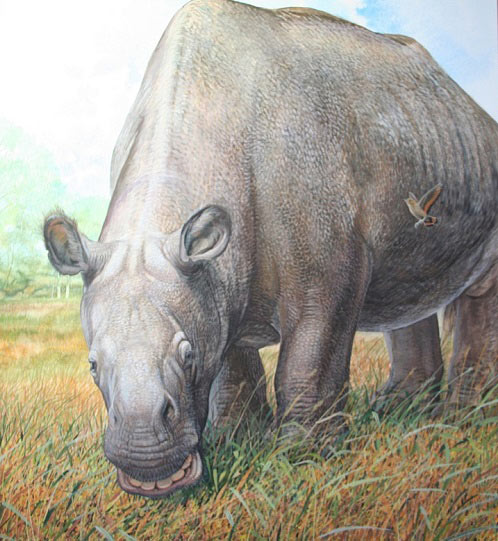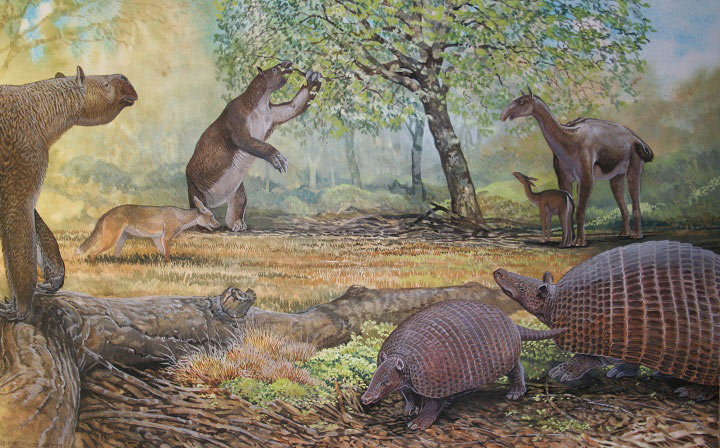The remarkable technical feat casts new light on the origins of Toxodon and Macrauchenia, South American ungulates or hooved animals, described by Charles Darwin as the ‘strangest animals ever discovered’.
Previous attempts by scientists to pinpoint the origin of the animals using morphology-based analysis and DNA analysis of fossils had failed.
But techniques refined by experts in our BioArCh research facility and Centre of Excellence in Mass Spectrometry uncovered evidence that the animals were related to mammals like horses - rather than elephants and other African species as some taxonomists have maintained.
The breakthrough came when the researchers switched to analysing collagen samples, a structural protein that can survive around ten times longer than DNA. The team at York team screened 48 fossil bone samples of Toxodon platensis and Macrauchenia patachonica discovered in the 19th century in the same area as those recovered by Darwin.

Toxodon platensis: illustration by Peter Schouten from the forthcoming
book "Biggest, Fiercest, Strangest" W. Norton Publishers (in production).
Family tree
They produced sequences covering more than 90 per cent of the collagen molecule, providing a phylogenetic family ‘tree’ for the two species.
This is the first time the technique has produced molecular information based on protein sequences from the time of the last Ice Age, opening up the potential for further important evolutionary insights.
“People have been successful in retrieving collagen sequences from specimens dating up to four million years old and this is just the start,” said Professor Matthew Collins of BioArCh who carried out the sequencing work with Professor Jane Thomas-Oates, director of York’s Centre of Excellence in Mass Spectrometry. “In theory, with material recovered from permafrost conditions, we might be able to reach back ten million years or more.”
Exploring the evolutionary process
He added: “We now have the potential to address many more of these challenges and to explore the evolutionary process much further back in prehistory.”
The research team also included York PhD student Frido Welker and Dr Jessica Thomas from the University’s Department of Biology.
The Natural History Museum and the American Museum of Natural History led the project which was funded through the Systematics and Taxonomy research scheme (SynTax) supported by the Systematics Association, Linnean Society and the Biotechnology and Biological Sciences Research Council and the Natural Environment Research Council. The research is published in Nature.
Toxodon and Macrauchenia disappeared around 10,000 years ago. The 1.5 tonne rhinoceros-sized Toxodon was the most common large-hoofed mammal to roam South America during the Late Pliocene and Pleistocene period over 16,500 years ago. The more nimble Macrauchenia, or ‘long llama’ resembled a humpless camel – but with a short trunk-like snout.
Charles Darwin collected fossils of the animals 180 years ago in Uruguay and Argentina during a stop-over on his famous journey on board The Beagle.
The text of this article is licensed under a Creative Commons Licence. You're free to republish it, as long as you link back to this page and credit us.






